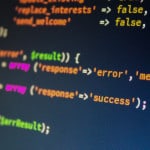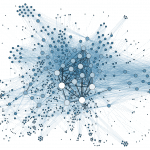In 2009, Hal Varian (Google’s Chief Economist) famously joked that “the sexiest job in the next 10 years will be Statistics”. Fast forward to 2016, and it’s abundantly clear that he was right (and how!)
$118,709 – the average salary for a Data Scientist today (according to Glassdoor). Compare that with, say, what the average web developer gets paid: $67,097.
Companies are churning out exponentially more data every day yet struggling to derive value from it. According to McKinsey, by 2018, the US alone will face a shortage of 150,000+ data analysts and an additional 1.5 million data-savvy managers.
But you know this stuff. You’ve heard the stats. In fact, you’ve even taken the important first step — firing up your browser and hunting down ways to learn Data Science. And for getting started, you deserve a pat on the back!
So where do you go from here?
Well, let’s not kid ourselves – learning these skills and then getting a job as a Data Scientist isn’t the easiest thing in the world. It’s not going to happen overnight and it’s important to know what to focus on.
Over the past year, we’ve talked to a lot of aspiring data scientists. The one question we hear a lot is:
“I’m an X major who wants to be a Data Scientist. Where do I start?”

So we’re sharing 5 important tips that will help you get on the path to Data Science excellence (and with some further reading on each topic). If you have your eyes set on the Data Science job market, these tips are crucial.
 1. Develop an area of technical analytic expertise
1. Develop an area of technical analytic expertise
Start with a solid foundation in statistics. Once you’ve built this expertise, learning Advanced Statistics, Machine Learning, or Natural Language Processing could come in handy. If you are still in school, take courses in these subjects. If not, develop expertise in any one of these areas, and try to be conversant in a few others. More reading – Learn How to Get Your First Data Science Job
 2. Build an affinity for code
2. Build an affinity for code
Hacking skills might be even more important than formal systems development here. As an entry-level Data Scientist, a lot of your work will be to take lousy data and put it in a form that can be analysed. And it will be different with each data set you work on. Learning Python or R will serve you well for multiple Data Science applications. More reading – Comparing Python and R for Data Science

3. Learn to tell a story (with data)
First, learn basic statistics. Second, be able to express your brilliant analysis in a way that normal people can understand. Your clients and colleagues won’t always understand what terms like “p-value” mean. You need to properly explain your results, their significance and their credibility (why SHOULD someone trust them) in a way that is straightforward and easy to understand for non-data scientists. Visualization techniques can be helpful in these instances. More reading – How to Tell a Powerful Story with Data Visualization
 4. Get a mentor
4. Get a mentor
A hands-on, project-based approach is best when you’re learning the ropes. You will make some mistakes and solving someone with experience to talk to, review your work, and keep you accountable makes it easier to stay on track. More reading – Nate Silver on Finding a Mentor, Teaching Yourself Statistics, and Not Settling in Your Career
 5. Build a strong portfolio
5. Build a strong portfolio
Building projects is not just the best way to learn, it’s also a great way to showcase the skills you’ve acquired. The best companies will want you to demonstrate that you can work through a data problem end-to-end: from data gathering and cleaning, to analysis and clearly communicating your findings. An effective way to start building portfolios is to enroll in some Data Science competitions. More reading – Tips for Data Science Competitions
If you take these steps, expect to spend at least a solid three months to half a year doing them right. Learning new skills and developing relationships takes time to get right, but in the end, when you accelerate your data science career, it’ll all be worth it.
Like this article? Subscribe to our weekly newsletter to never miss out!





